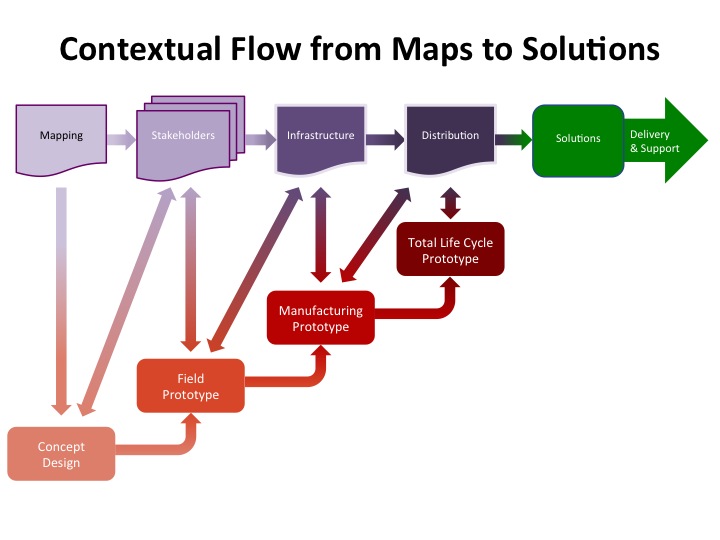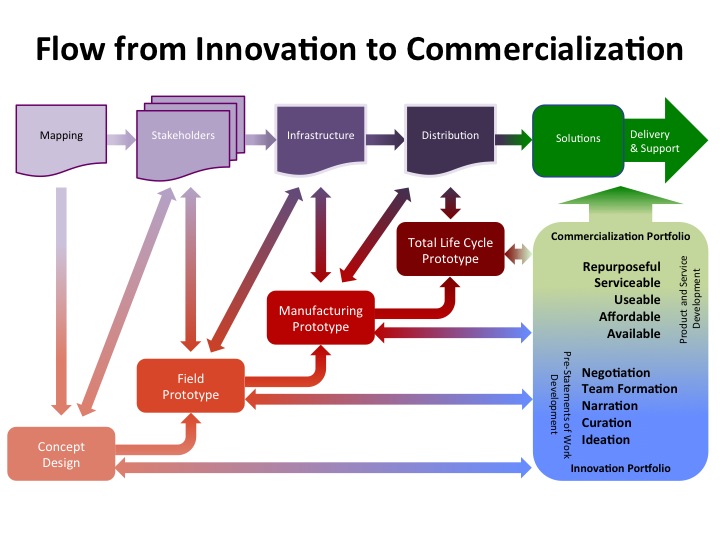User talk:Stevebosserman: Difference between revisions
Jump to navigation
Jump to search
| Line 19: | Line 19: | ||
:At some point in its useful life a product requires maintenance or, if it stops working properly, needs repair. How difficult, expensive, and time-consuming is it to get this done? How does the design and manufacturing of a product take into consideration the challenge of maintenance and repair? As new models become available, can I reuse my older model through upgrades and updates to take advantage of new features and functionality I want? If I no longer need an item for its original purpose, can I deconstruct and repurpose it for an entirely different application? And if there's no life left in it, how easily can I recycle it without waste or adverse environmental consequence? Careful consideration of these questions can deliver a higher level of value to customers and consumers. Enough so that incorporating these factors into the design from the outset greatly increases its likelihood of success. | :At some point in its useful life a product requires maintenance or, if it stops working properly, needs repair. How difficult, expensive, and time-consuming is it to get this done? How does the design and manufacturing of a product take into consideration the challenge of maintenance and repair? As new models become available, can I reuse my older model through upgrades and updates to take advantage of new features and functionality I want? If I no longer need an item for its original purpose, can I deconstruct and repurpose it for an entirely different application? And if there's no life left in it, how easily can I recycle it without waste or adverse environmental consequence? Careful consideration of these questions can deliver a higher level of value to customers and consumers. Enough so that incorporating these factors into the design from the outset greatly increases its likelihood of success. | ||
"Context is everything" | *"Context is everything"*, the dictum states. And that is certainly true for concepts / ideas seeking to become solutions. Figure 2 below illustrates the flow of critical aspects about the "solutionizing" context. | ||
[[File:Contextual_Flow_from_Maps_to_Solutions.jpg]] | [[File:Contextual_Flow_from_Maps_to_Solutions.jpg]] | ||
| Line 26: | Line 26: | ||
*''Mapping:'' What are the characteristics of the landscape where the idea will become a solution? | *''Mapping:'' What are the characteristics of the landscape where the idea will become a solution? | ||
:The first image that comes to mind when one sees the word "mapping" may be that of a world atlas that shows the geopolitical boundaries of countries from one continent to the next or maybe a roadmap that charts the routes and calculates the distances from place to place. These are certainly examples of mapping, but with satellite and aerial imagery, land-based sensor applications, and hand-held mobile ground-truth capabilities available today, the data collected and mapped tells us so much more. The comprehensive data-sets that result from these technologies provide us with remarkable insights into the dynamics and conditions of natural, human, and constructed ecosystems as well as the interrelationships among them. As an example, the [http://amp.osu.edu/northeast-ohio-agricultural-assets/ Agroecosystems Management Program] at The Ohio State University offers Geographic Information System (GIS) maps with detailed information about select agricultural, environmental, and economic factors to guide community stakeholders in their individual and collective decision-making. Similar mapping capabilities are available at no or low cost through public, private, and voluntary sector organizations worldwide. | |||
*''Stakeholders:'' Who will shape the ideas as they move forward? Where are they located? | *''Stakeholders:'' Who will shape the ideas as they move forward? Where are they located? | ||
*''Infrastructure:'' What is the condition, capability, and capacity of the communications, transportation, water, and electric power utilities in the location where the solution will be delivered? | *''Infrastructure:'' What is the condition, capability, and capacity of the communications, transportation, water, and electric power utilities in the location where the solution will be delivered? | ||
Revision as of 19:13, 23 August 2014
Solution Development
Have you ever had such a clever idea you couldn't imagine that it would not be a success then, for whatever the reason, it just didn't develop as you thought it would - maybe not at all? If so, you're not alone.
Ideas fail to become viable solutions for many reasons. Figure 1 below shows the basic flow of an idea or concept through a series of "tests" or prototype stages to prove its worth as a solution.
Figure 1
Each stage in the flow poses key questions that, when addressed, further the concept's development:
- Field Prototype: Does it work?
- Many ideas look good on paper, but don't function as envisioned on the first attempt...or after multiple adjustments and revisions. But keep trying. As Thomas A. Edison stated, “I have not failed. I've just found 10,000 ways that won't work.” That said, oftentimes, what works in one location doesn't work very well elsewhere even though on the surface it seems as though it should. This "sensitivity to context" is a central theme in solution development. Further discussion will ensue with Figure 2.
- Manufacturing Prototype: How does a person make it?
- Assembling a one-off prototype is a very different process than producing more than one for distribution. Key questions include: Can the production process be customized so that each item produced meets unique customer specifications and expectations? Can the design criteria be distributed, virtually, to equipment capable of producing the item regardless of location? Can the production process be automated? Can production be located close to points of use or consumption? Can production be done using locally available and affordable materials, parts, equipment, etc.? Consideration of these questions often requires retesting the field prototype, i.e., if I change the product in order to produce it more handily, will it still function as intended? This can lead to several back and forth cycles to reconcile the two.
- Total Life Cycle Prototype: How can a person repair it? Or reuse it? Or repurpose it? Or recycle it?
- At some point in its useful life a product requires maintenance or, if it stops working properly, needs repair. How difficult, expensive, and time-consuming is it to get this done? How does the design and manufacturing of a product take into consideration the challenge of maintenance and repair? As new models become available, can I reuse my older model through upgrades and updates to take advantage of new features and functionality I want? If I no longer need an item for its original purpose, can I deconstruct and repurpose it for an entirely different application? And if there's no life left in it, how easily can I recycle it without waste or adverse environmental consequence? Careful consideration of these questions can deliver a higher level of value to customers and consumers. Enough so that incorporating these factors into the design from the outset greatly increases its likelihood of success.
- "Context is everything"*, the dictum states. And that is certainly true for concepts / ideas seeking to become solutions. Figure 2 below illustrates the flow of critical aspects about the "solutionizing" context.
Figure 2
- Mapping: What are the characteristics of the landscape where the idea will become a solution?
- The first image that comes to mind when one sees the word "mapping" may be that of a world atlas that shows the geopolitical boundaries of countries from one continent to the next or maybe a roadmap that charts the routes and calculates the distances from place to place. These are certainly examples of mapping, but with satellite and aerial imagery, land-based sensor applications, and hand-held mobile ground-truth capabilities available today, the data collected and mapped tells us so much more. The comprehensive data-sets that result from these technologies provide us with remarkable insights into the dynamics and conditions of natural, human, and constructed ecosystems as well as the interrelationships among them. As an example, the Agroecosystems Management Program at The Ohio State University offers Geographic Information System (GIS) maps with detailed information about select agricultural, environmental, and economic factors to guide community stakeholders in their individual and collective decision-making. Similar mapping capabilities are available at no or low cost through public, private, and voluntary sector organizations worldwide.
- Stakeholders: Who will shape the ideas as they move forward? Where are they located?
- Infrastructure: What is the condition, capability, and capacity of the communications, transportation, water, and electric power utilities in the location where the solution will be delivered?
- Distribution: How will the solution get from the point of production to the point of use / consumption?
Figure 3
Figure 4
Figure 5
Framework for Questions and Responses That Prompt Solution Development
-
Figure 1 - Introduction
-
Figure 2 - Stage 1
-
Figure 3 - Stage 2
-
Figure 4 - Stage 3
-
Figure 5 - Stage 4
-
Figure 6 - Final Stage










